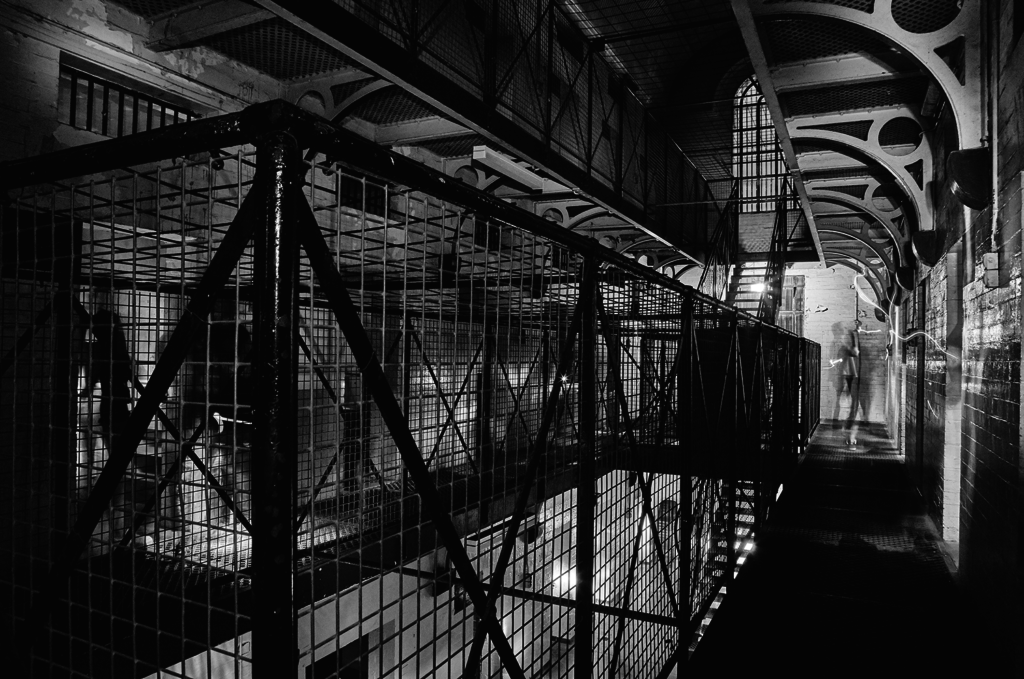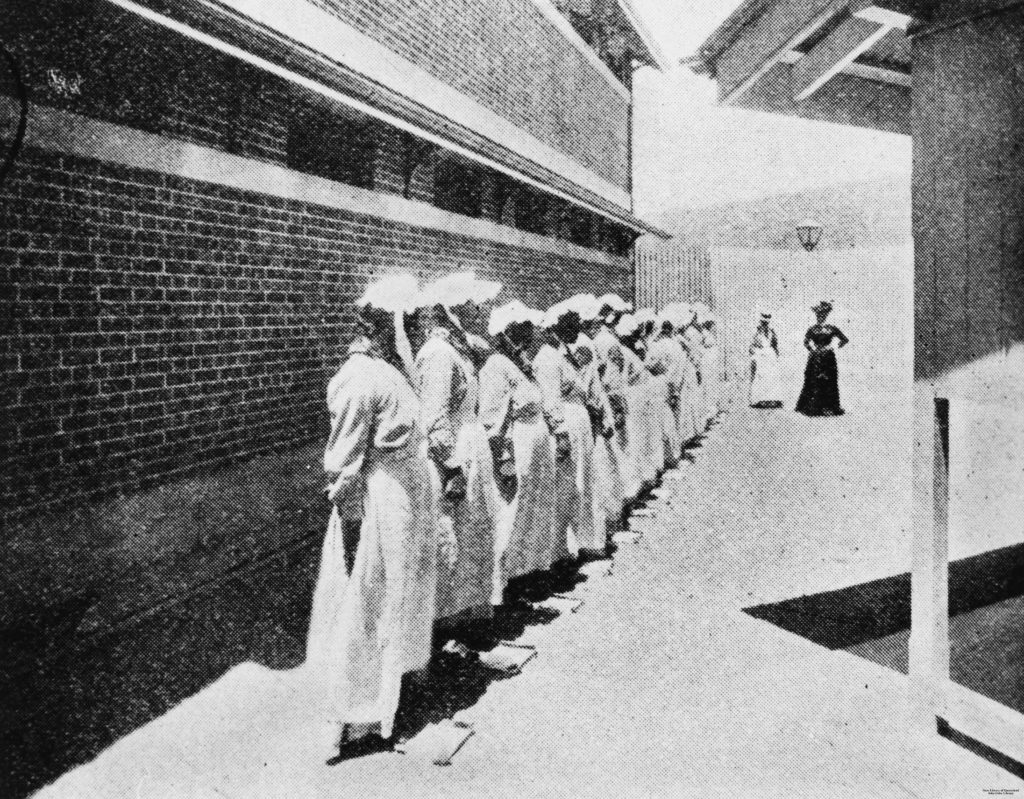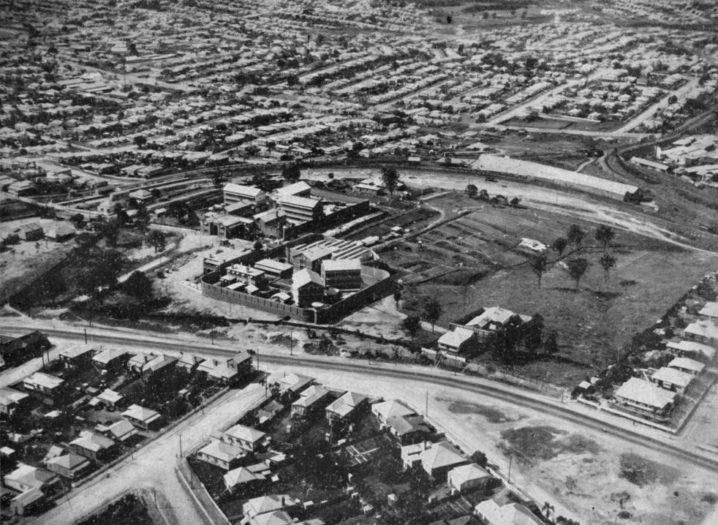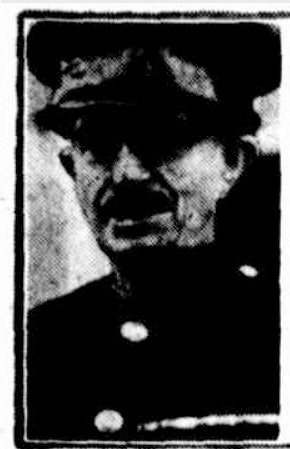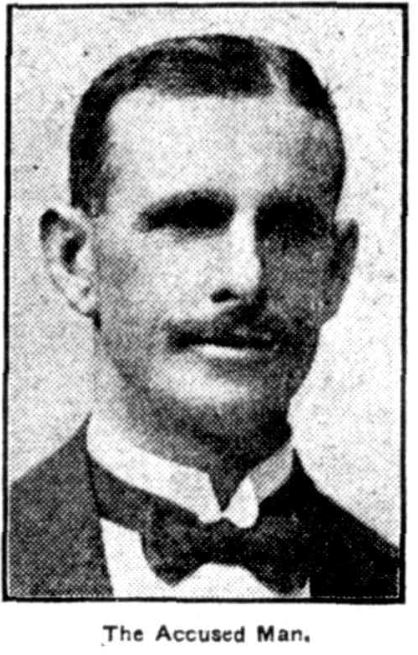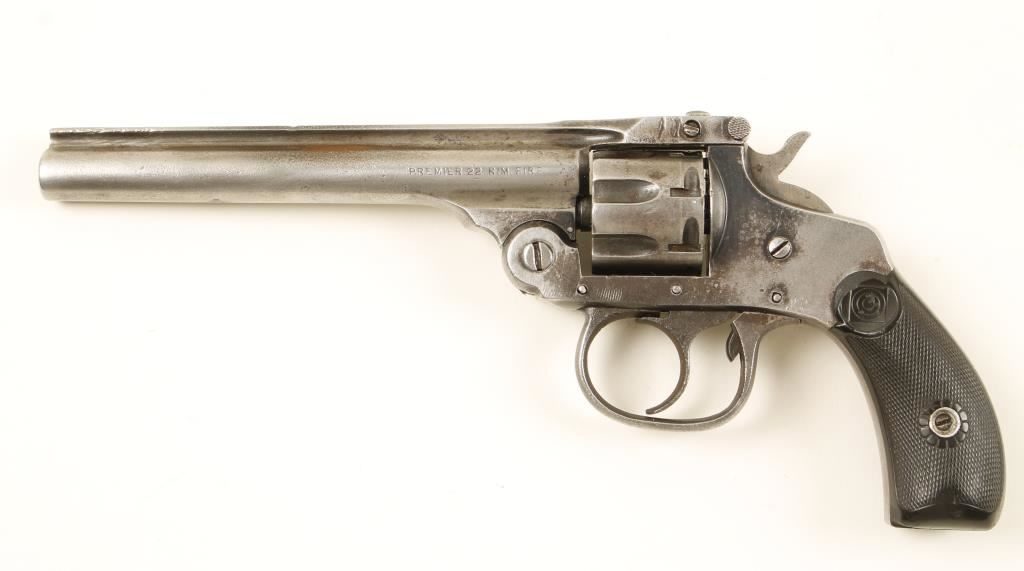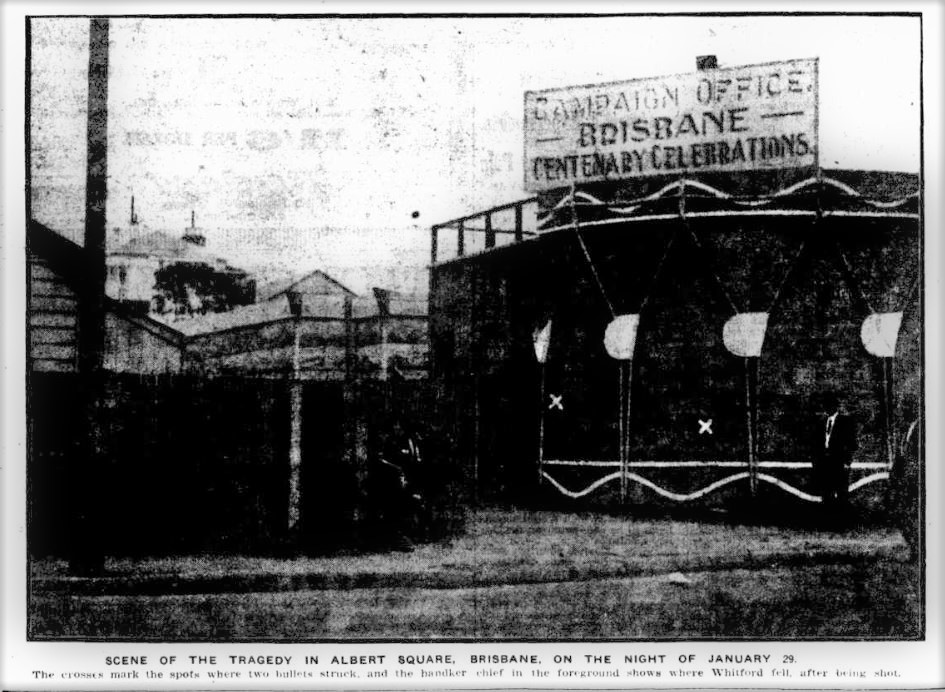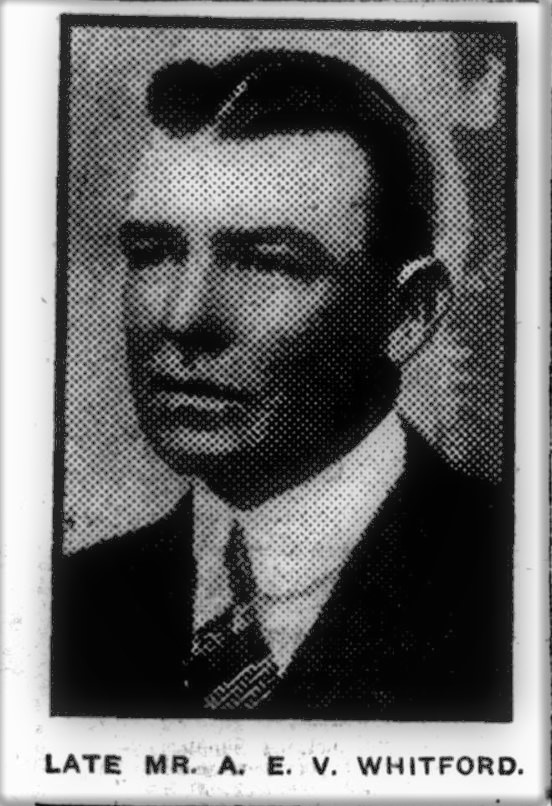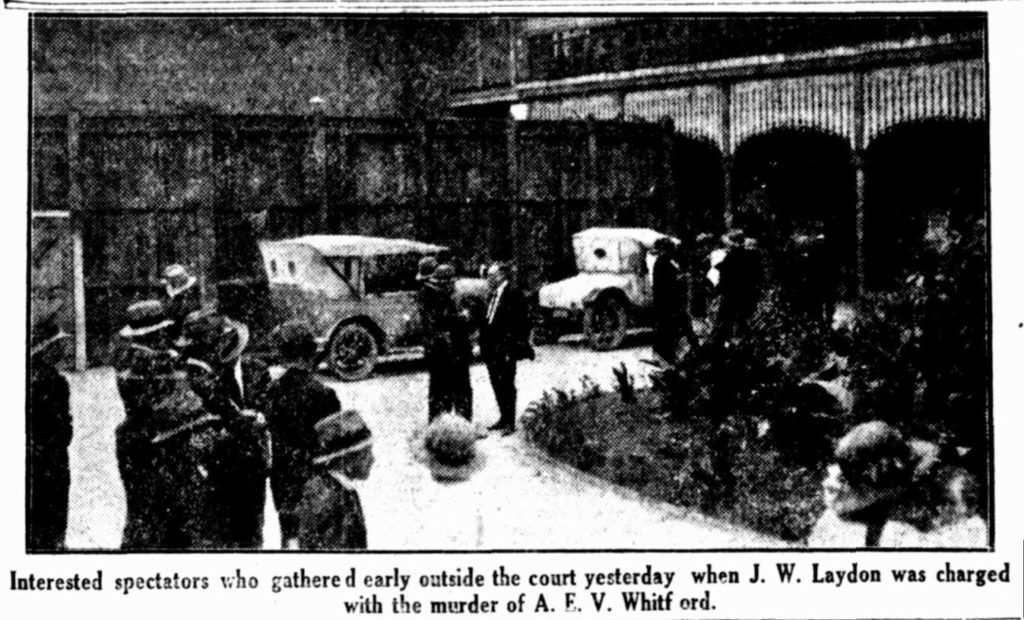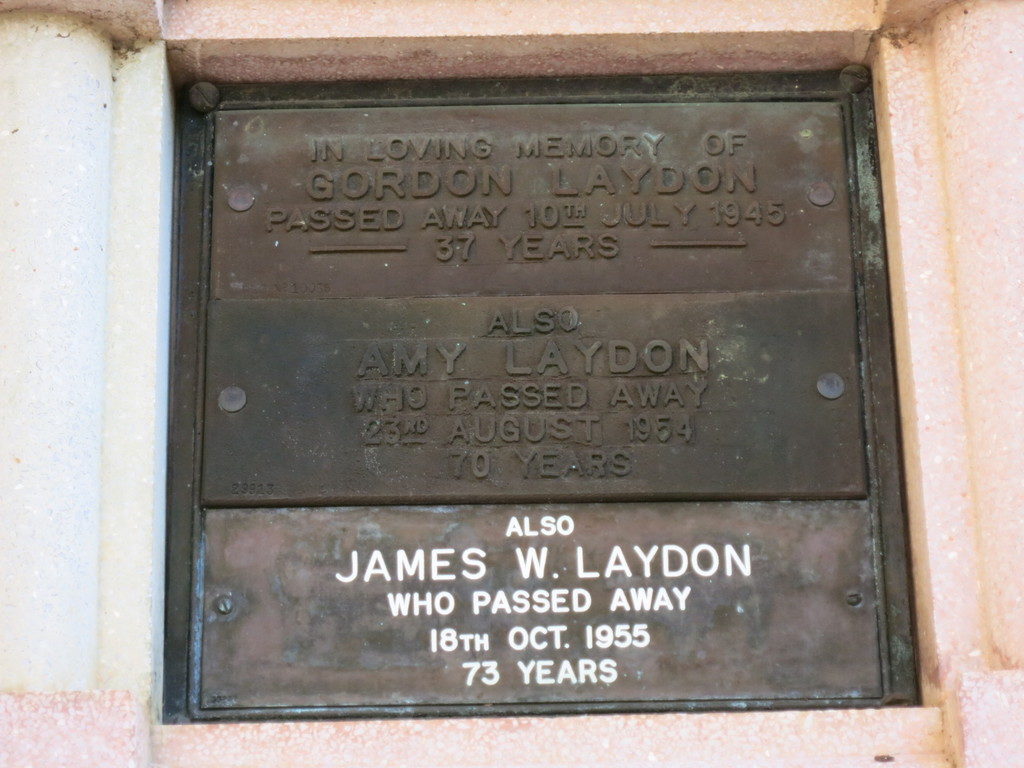“BOGGO” – EPISODE #8 –OFFICER KEVIN HAYDEN
- On : 19 November, 2018
- By : Boggo Road Gaol
- Category : Stories
- View : 1780
“BOGGO” – EPISODE #8 –OFFICER KEVIN HAYDEN
Kevin Hayden graduated into the prison service in 1976… Initially at Wacol Prison, but soon he was transferred to the trouble filled Number 2 Division – Boggo Road Gaol.
I started in the service because I wanted better job security and a career. My father was an officer in the prison service and had encouraged me to apply when my job prospects were not too good. I worked initially at Wacol Prison and then went on to Boggo Road a little later.
My first impression of Boggo Road was it was an absolute nightmare. I couldn’t believe how outdated the place was. The whole place was filthy. There were rats bigger than cats and Number Two division was just putrid. There was no sanitation in place there. The conditions for inmates and officers alike was barbaric. Everyone was frustrated beyond belief.
The trouble there all came to a head in 1988, and a series of riots took place. These times were the most frightening to say the least. Conditions at Boggo Road Gaol had become unbearable and many officers left the job. I stayed on, it was difficult. But it was my job, a job I needed to keep.
After an investigation into the conditions into the gaol. The Kennedy Report was released. The report recommended a number of changes and two div was to be closed for good.
It really was a blessing when the government closed down two division. At one stage there, there was three inmates in each cell which made tensions very high. We had rooftop protests, fires and all kinds of other problems. It was bad, really bad.
When Boggo Road eventually closed completely, I went back to Wacol Prison where I proceeded to work my way up the ranks. In 1998 I decided that my time inside was up. I moved to the Gold Coast to start a new life. I had officially resigned after 22 years’ service.
I was proud to have served as a prison officer and made many friends through the job, Officers and Inmates alike. It is a difficult job and sometimes it gets a bad rap.
Listen to Episode #8 of ‘Boggo’ – the official podcast for Boggo Road Gaol.
In this episode, Research Co-ordinator Sue, and former officer Kevin, discuss Kevin’s career in the prisons service and what life was like for an officer on the inside of Boggo Road Gaol during the infamous eighties full of riots, protests and violence.
Visit www.boggoroadgaol.com to book history tours and events.
“BOGGO” – EPISODE #7 –BURGLAR BILL
- On : 12 November, 2018
- By : Boggo Road Gaol
- Category : Stories
- View : 1511
“BOGGO” – EPISODE #7 –BURGLAR BILL – Notorious thief and safecracker William Thompson in his own words.
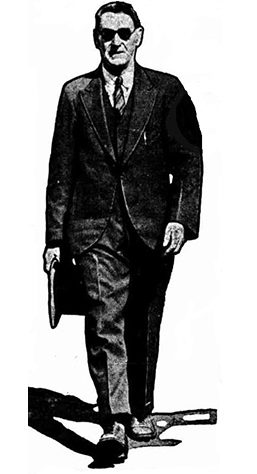
When first entering a life of crime he thought he could beat the law. But after twenty-seven years in and out of gaol, in 1937, he finally realised that crime does not pay. In a rare treat, the Truth newspaper in Brisbane published his full story, perhaps he would tell it best anyhow!
“I can look back on those wasted years- years that I cannot recall to live over again, now that I have learned a bit of sense. Perhaps, as crooks go, I have had a particularly eventful life; I have met and consorted with many of the ‘big’ men; I have witnessed executions from inside and I have spent some weeks in a cell that once held the famous Ned Kelly. But those memories are nothing to be proud of. I am well aware that today I am regarded as one of the most persistent burglars in Australia, and I am certainly not proud of my title “Burglar Bill”.
Listen to Episode #7 of ‘Boggo’ – the official podcast for Boggo Road Gaol.
In this episode, Research Co-ordinator Sue, and tour guide Tom, share the story of the notorious Burglar Bill – William Thompson in his own words as sent to the Truth newspaper on his release in 1937.
Visit www.boggoroadgaol.com to book history tours and events.
“BOGGO” – EPISODE #6 –THE WHISKEY AU GO GO KILLERS Part 2
- On : 5 November, 2018
- By : Boggo Road Gaol
- Category : Stories
- View : 3494
“BOGGO” – EPISODE #6 –THE WHISKEY AU GO GO KILLERS – John Andrew Stuart and James Richard Finch – PART 2.
WARNING: Strong content and language.
The 1st November 2018 marks the 30th Anniversary of James Finch confessing his guilt in relation to the firebombing the Whiskey Au Go Go – to A Current Affair journalist Jana Wendt – live via satellite from London.

In the now-legendary interview Finch confirmed that the information published days earlier in The Sun newspaper by Chief-of-Staff Dennis Watt was correct. James Finch claimed himself and boxer Tom Hamilton did the deed, while tattooist Billy McKulkin drove the getaway vehicle. Brisbane criminal Vincent O’Dempsey plotted the firebombing. Stuart was paid $5,000 to organise Finch’s involvement.
Jana Wendt asked Finch if he was worried now he had told the truth, that he might be extradited back to Australia to face one of the outstanding murder charges – Stuart and Finch were given life sentences on only one of the 15 counts brought against them. As this was pointed out, Mr Finch retracted his confession, and changed his story yet again, live on TV, to a shocked nation-wide TV audience.
Listen to Episode #6 of ‘Boggo’ – the official podcast for Boggo Road Gaol.
In this episode, Gaol Director Jack Sim, author of “History of Boggo Road Gaol”, and former prison officer John, talk about James Finch, his character and personality in Brisbane Prison – Part 2 of a two-part story.
Visit www.boggoroadgaol.com to book history tours and events.
“BOGGO” – EPISODE #5 –THE WHISKEY AU GO GO KILLERS
- On : 29 October, 2018
- By : Boggo Road Gaol
- Category : Stories
- View : 3295
“BOGGO” – EPISODE #5 –THE WHISKEY AU GO GO KILLERS – John Andrew Stuart and James Richard Finch – PART 1.
WARNING: Strong content and language.
31st October 2018 – Halloween – marks the 30th Anniversary of James Finch confessing to firebombing the Whiskey Au Go Go nite club at Fortitude Valley.
On Thursday, 8th March, 1973, at 2.08 am, a drum of petrol was rolled into the street-level foyer of the club and set alight with a book of matches. In ten minutes, 15 people – ten men and five women, were dead. It remains Brisbane’s deadliest crime. At the time it was Australia’s worst mass murder, eclipsed only by the tragedy at Port Arthur in 1996.
John Andrew Stuart and James Richard Finch were convicted of the firebombing. Both men were no strangers to prison, having extensive criminal histories for violent crime. However, from the moment of their arrest they protested their innocence, claiming they were setup by corrupt police. After Stuart was found dead in his prison cell on New Years Day 1979, Finch focused on getting out, marrying invalid Cheryl Cole, who tirelessly fought for her husband’s release. Finch was paroled in February 1988. Deported to his native England, having served 15 years for the crime, Finch vowed to return to clear his name.
In a shocking twist, on Monday 31 October 1988 – Halloween – Brisbane’s The Sun front page declared:
Finch confesses I DID IT
Whiskey Au Go Go: The Truth.
The Sun’s London Chief-of-Staff Dennis Watt spent 5 days with the convicted killer. The exclusive interview saw James Finch admit he and John Stuart had lied to their supporters. Finch claimed himself and boxer Tom Hamilton did the deed, while tattooist Billy McKulkin drove the getaway vehicle. Brisbane criminal Vincent O’Dempsey was named as the man who plotted the firebombing. Stuart was paid $5,000 to organise Finch’s involvement.
Listen to Episode #5 of ‘Boggo’ – the official podcast for Boggo Road Gaol.
In this episode, Gaol Director Jack Sim, author of “History of Boggo Road Gaol”, and former prison officer John, talk about Stuart.
Make sure to tune in next week for Part 2.
Visit www.boggoroadgaol.com to book history tours and events.
The Ghosts of Boggo Road Gaol – Boggo Episode 4
- On : 22 October, 2018
- By : Boggo Road Gaol
- Category : Stories
- View : 6596
Ghosts of Boggo Road Gaol -“BOGGO” – Episode #4
Former prison officers and prisoners believed that Boggo Road Gaol was haunted; there are ghost stories dating back to the 1930s. Many people died within the walls of the prison during its long history. Many old officers and prisoners claimed that the prison had a few ghosts. Working in such an ancient place lent itself to stories.
That the Gaol was haunted was something that rarely was mentioned outside its walls when it was in operation, as officers largely kept their experiences to themselves. Usually when they talked about such things their mates would laugh it off or even ridicule them. Prison prankster Ron Darby, a veteran officer, loved nothing more than to play jokes on new officers by running a sheet up a wall on the backtrack as it was called, or, on foggy nights, ride a bike with a sheet over his head along this same section to rattle them.
As well as the jokes, the ghost of “Ernie” – Ernest Austin – the last man hanged at Boggo Road and in the state of Queensland in 1913, was said to torment new prisoners at the Gaol. This story was passed down through the cellblock sweepers and seems to have been told right through the 1980s, making it one Australia’s longest told prison ghost tales.
Brisbane Ghost Tours has conducted historic ghost tours of Boggo Road Gaol since 1998. Over 20 years visitors coming on a tour of No.2 Division – the only remaining section of Brisbane Prison – swear they have had experiences. Some say they have been touched, grabbed or even spoken to by spirits. Many claim to have seen a female figure on the upper floors of the cellblocks – leading to speculation as to who it might be. Ellen Thomson was the only women executed in Queensland; she paid the ultimate penalty on the gallows in the oldest part of Brisbane Prison – old No.1 Division – which was torn down in the 1970s. Another possibility is the ghost is of a former staff member – the Matron of the Women’s Prison (the original use of No.2 Division) or a female warder. Perhaps the most unusual haunting is a three-legged ghost cat – Tripod – who visitors claim has rubbed himself on their legs or been heard meowing.
Listen to Episode #4 of ‘Boggo’ – the official podcast for Boggo Road Gaol.
In this episode, Gaol Director Jack Sim, author of “The Ghosts of Boggo Road Gaol”, and founder of Brisbane Ghost Tours, and Ghost Tour guide Sam, talk about the origins of the ghosts, and explores the history behind them, and whether visitors to the historic gaol today continue to have experiences.
Visit www.brisbaneghosttours.com.au to book the Boggo Road Gaol Ghosts & Gallows Tour.
Visit www.boggoroadgaol.com to book history tours and events.
The Female Division – Boggo Episode 3
- On : 15 October, 2018
- By : Boggo Road Gaol
- Category : Stories
- View : 2517
The Female Division – ‘Boggo’ – Episode 3
Boggo Road Gaol is remembered as a place of punishment for men. It is true…it was. But long before men were locked up in No.2 Division – the section of the prison that remains standing today –- it was a prison for women. For 100 years women were locked up at Boggo Road. Their stories largely untold and often overlooked.
The Female Division
Boggo Road Gaol is remembered as a place of punishment for men. It is true…it was. But long before men were locked up in No.2 Division – the section of the prison that remains standing today –- it was a prison for women. For 100 years women were locked up at Boggo Road. Their stories largely untold and often overlooked.
In 1898-99 the Public Works Department prepared plans for the long-argued for new women’s prison at Boggo Road. The Fortitude Valley Gaol, Toowoomba Gaol and the Roma Gaol, were old and decrepit, their facilities were simply too small or were insecure. Ultimately though, it came down to financial reasons. Repairs and extensions would have cost far more than the construction of an entirely new prison. It simply was financially more viable too, for the prisoners all to be housed in one, new, modern prison.
And so, it was, plans were drafted, and a tender sought. In September 1901 respected Brisbane builders A. Lind and Son secured the tender. It would take some £18,795 (2018 – $3 million) and two years to construct. H.M. Prison for Women was officially handed over by the construction team on the 6th of October 1903. Sixteen ladies and their wardress Sarah Browne moved in that afternoon.
Prisoners from Toowoomba Gaol were brought down to Brisbane by train, arriving at H.M. Prison for Women on the 8th of October 1903. Nineteen ladies were brought down in the charge of David Douglas McKee who will be the Senior Warder, Clerk and Storekeeper for the female division. The possessions of the ladies from Toowoomba Gaol were lost on the Toowoomba Range. They were left with nothing. The final admissions in the first two weeks of the new female prison came directly from the Police Court and the final one on the train from the Roma Gaol on the 15th of October. So, it was, Sarah had 41 prisoners in her charge.
This is just the beginning of the story of the female division at Boggo Road Gaol. Women would feature in the fabric of Boggo Road for over the next 100 years.
Experience the Prison Players on the first Sunday each month – as part of the guided History Tour, which runs 7 days, 11am daily. The actors from the Female Division branch of the Prison Players; Boggo Road Gaol’s very own theatre troupe bring the gaol to life. As visitors you will be taken back to 1907, when the female prison was only a few years old. So, why not escape the 21st century; leave behind the cars, air conditioning, electricity and modern technology. Bring along the family and show them what life was like before all of the modern conveniences and even some of the things we see as basics to everyday. You can pre-book your tickets for the first Sunday of each month here
Listen to Episode #3 of ‘Boggo’ – the official podcast for Boggo Road Gaol. In this podcast, Gaol Research Coordinator Sue and actor Karen – a member of the Female Division, a branch of Boggo Road Gaol’s official live theatre troupe “The Prison Players”, talk about this forgotten history.
Visit www.boggoroadgaol.com to book tours and events.
The Gallows – Boggo Episode 2
- On : 8 October, 2018
- By : Boggo Road Gaol
- Category : Stories
- View : 2445
The Gallows – ‘Boggo’ Episode 2
Between 1883 and 1913, forty-two criminals comprised of thirty-nine men, one woman and two teenagers were executed at Boggo Road Gaol. All were hanged, the last in 1913.
Between 1883 and 1913, forty-two criminals comprised of thirty-nine men, one woman and two teenagers were executed at Boggo Road Gaol. All were hanged, the last in 1913.
The gallows were located in ‘A’ Wing, the original cellblock in the oldest section of the gaol built in 1883 – later known as No. 1 Division. The gallows consisted of three parts:
1 The Beam – a strong timber beam running across the breadth of the cellblock under the upper floor gantry (walkway). Three hooks hung beneath the beam – to which the hangman’s rope could be attached.
2 The Scaffold: the platform that jutted out from the first floor gantry, directly below the beam.
3.The Trap: in the metal floor of the scaffold were two trap doors, located directly below the beam.
At eight o’clock Monday morning, the bell would toll to announce the grim act about to take place. Then the condemned person would be invited by an official to say their last words. The noose was then put around the condemned’s neck. At a signal from an official, the hangman would move a lever which opened the Trap and sent the prisoner to eternity. The body was lowered into a coffin and taken away for burial at South Brisbane Cemetery.
Public agitation for the abolition of capital punishment began in the 1890s. The last man hanged was Ernest Austin on 22 September 1913. In 1922 Queensland became the first state in the British Empire to legislate the end of capital punishment.
Listen to Episode #2 of “Boggo” – the official podcast for Boggo Road Gaol. Join Gaol Director Jack Sim and Research Coordinator Sue as they discuss a new exhibition – “The Gallows” – which explores the history of capital punishment, and punishment, behind the walls of Boggo Road Gaol.
The new exhibition is open everyday at 1pm following the daily History Tour at 11am, and is included in the Boggo Road Gaol Ghosts & Gallows Tour.
Origin of the name – Boggo
- On : 1 October, 2018
- By : Boggo Road Gaol
- Category : Stories
- View : 3778
Origin of the name -Boggo
The distinctive name of Australia’s most notorious prison has a fascinating origin.
The origin of the name “Boggo” may lie with the traditional owners of the area south of the Brisbane River. According to Annie MacKenzie, author of Memories Along the Boggo Track, on the edge of “One Mile Swamp” at Woolloongabba were two leaning trees – referred to as “Bloggo” or “Bolgo”.
From the late 1840s bullock teams headed east along Stanley Street, transporting goods from the wharves at South Brisbane, to Ipswich Town. The rapidly growing commercial centre serving the Darling Downs was considered to be the likely capital of a future new state. The teamsters turned off at these trees, skirting the edge of the swamp, creating a short-cut to Ipswich Road to the west. The route they carved through the dense scrub became a rough, perilous track connecting South Brisbane to the Ipswich Road – called Bolgo Road.
The early track was virtually impassable in wet weather, especially the lowest section from the corner of Stanley Street also called Clarence Corner to the foot of the slope which would become known as the “Gaol hill”. After rain, this section became a “bog-hole”. The aboriginal word “Bloggo” was corrupted to simply “Boggo” and the notorious way to Ipswich Road was locally cursed as the “Boggo-track”. According to local folklore a passenger coach drawn by four horses got bogged so deep that they were never seen again.
The track was surveyed when the Gaol Reserve was mapped in 1863, eventually becoming known as the “Boggo-road”. Over time One Mile Swamp was drained and filled, the Boggo-road raised, widened and graded. In time, the entire area from the former track south-west to the Brisbane River became known as “Boggo”.
The Gaol was never officially “Boggo Road Gaol”. The official name changed over time: H.M. Gaol South Brisbane (1883); H.M. Prison Brisbane (1921); Brisbane Prison Complex (1973-74); finally, Brisbane Correctional Centre (1988).
Locals called it “Boggo-Road Gaol” after the road it was on.
Listen to Episode #1 of “Boggo” the official podcast for Boggo Road Gaol . Join Gaol Director Jack Sim and Research Coordinator Sue as they explain where the word “Boggo” came from and how Boggo Road Gaol was never its official name. Also, don’t forget to come get “locked up” with us on our daily public History Tours running at 11:00am everyday!
This article was contributed by Research Coordinator Sue Olsen as part of the ongoing research program for Boggo Road Gaol Pty Ltd. The aim of the program is to bring to light and share articles relating to Boggo Road for the purposes of review and study. Do you have a story to share or something you would like us to know about? You can contact the research team here.
Officer – Frank “Trooper” Hills
- On : 21 September, 2018
- By : Boggo Road Gaol
- Category : Stories
- View : 1948
Frank “Trooper” Hills
Frank “Trooper” Hills – Boer War and Gallipoli veteran serves 25 years in Boggo Road Gaol. Not how you think, he was an officer and a gentleman.
Frank Hills, known to everyone as “Trooper”, was born in Brighton, England to William Nash Hills and Fanny Morell.
His nickname “Trooper” was gained through his extensive military career in the Australian Light Horse. He served his country with pride, from the Boer War through to the end of the first world war with only a few days between deployments. He was twice wounded at Gallipoli, rapidly rising through the ranks as the 9th Infantry arrived at Gallipoli. On enlistment he was a private, two days later promoted to Corporal, and three days later again to Sergeant. As the history books tell us, Gallipoli was a terrible campaign with a tragic loss of life. The army needed good experienced soldiers to lead their young men into battle, I suppose this is how trooper got promoted so quickly, a little older at almost 32, with his experience it is little surprise the promotions happened as they did. Less than a year later he was promoted to Company Sergeant Major, and eventually temporary Regiment Sergeant Major.
Next the campaign would take “Trooper” to France. Where again he was wounded. Dispatched to England for medical treatment he would return to the front a few weeks later after some rest. Finally transferred home in 1918 as part of a unit to guard submarine bases in Sydney.
Prison Service
“Trooper” joined the prison service as a probationary warder on the 4th of April 1919, just one month after being discharged from the Army. First posted to St Helena, he was involved in several prisoner related problems. One fellow warder being slashed in the throat with a knife.
“Trooper” then later moved to Boggo Road Gaol where he would serve the remainder of his 29 years in the service. “Trooper” kept his head down and was a good prison officer, he had great consideration for his fellow man and when interviewed after his retirement he would talk about the times of prisoners at the gaol and believed that the majority of men under his care were merely victims of circumstance. Of course there were some “Bad Eggs” he said.
Perhaps the most interesting and sensational time of Trooper’s career at Boggo Road was the discovery of the Cyanide Plot of 1940. A prisoner William Edward Langford smuggled a deadly vial of Cyanide under his armpit into Boggo Road Gaol. It only being discovered on a pat down search of the prisoner before putting him in his cell. The prisoner shouted for the warders “For god sake tell that man not to open that vial and smell it – it will knock him _____ out”. It was soon discovered that the vial contained enough Cyanide to kill 50 people. The 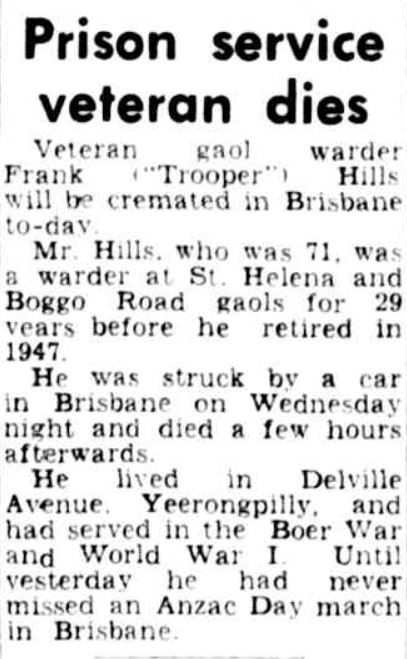
Retirement
“Trooper” would retire in 1947 to his home in Yeerongpilly with his wife, Helen. Throughout all of the years after returning home from the war, he never once missed an Anzac Day service. Tragically, on the 23rd of April 1952, while crossing the street. “Trooper” Hills was struck by a car and died in the Brisbane General Hospital just a few hours later, he was 67. Anzac Day 1952 would be the only one he ever missed. He was cremated at Mt Thompson crematorium on the 26th of April 1952, his ashes laid to rest with his wife who survived him by just six years.
Want to know what it was like to be an officer at Boggo Road Gaol? Come along this Sunday for our officer tour and meet former officer Kevin Hayden! For more information click here
This article was contributed by Research Coordinator Sue Olsen as part of the ongoing research program for Boggo Road Gaol Pty Ltd. The aim of the program is to bring to light and share articles relating to Boggo Road for the purposes of review and study. Do you have a story to share or something you would like us to know about? You can contact the research team here.
LIFER – James William Laydon
- On : 13 September, 2018
- By : Boggo Road Gaol
- Category : Stories
- View : 2334
LIFER – James William Laydon
It was a fine evening, dinner and a show at the glorious Tivoli Theatre. Shortly after 8:30pm shots rang out, Ex- Parliamentarian Whitford was dead and James William Laydon was on the run. Jealousy, the green-eyed monster had struck a fatal blow and it would strike a ruinous path through two families. Laydon – “I was taught at the war to kill my enemies, I killed many there that never did me any harm. Shooting was too good for that mongrel”
Crime: Wilful Murder
Native Place: England
Age: 39 years
Height: 5 feet 3½ inches (161cm)
Build: Slight
Complexion: Fresh
Hair: Grey
Eyes: Blue
Weight: 8 Stone 2 ounces (52kg)
Remarks: Small scar left thumb; left little finger been broken; two vaccination marks left bicep; large scar outside right hand; four white marks left bicep; varicose veins left leg; large operation scar right side of stomach.
James William Laydon
Born in Durham England, the third son of Thomas and Bridget Laydon. He was married to Amy Wilson in Durham and they had their eldest two children in the Sunderland district. the family arrived in Queensland in 1911 as third-class passengers aboard the ship Orveito. The family lived in Princhester street at West End before later moving to 10 Prospect Terrace, Highgate Hill for remainder of their lives.
At the time of his arrest, Laydon was working as a Labourer. He had however been a soldier in the first world war and was a carpenter by trade. His army record is of an excellent character. During his service he served in the battle of the Somme. Wounded and gassed, he certainly had seen and done some horrible things in service for his country. When war broke out he enlisted voluntarily, serving the entire war and returning to Australia in 1919. It was his excellent record that he would later rely upon in his defence.
Understandably, times were tough during the war, his wife with three children, 8,6 and 1 would have had a difficult time of it. Money would have been tight. It was times like this that one would seek the assistance of friends. You see, the Whitford’s and the Laydon’s were friendly. It comes as no surprise that a struggling Mrs Laydon would have sought help from her friend Mr Whitford. It was the alleged help that she received that was the root cause of all of this trouble.
Prelude to death
On a hot summers evening, Tuesday the 29th of January 1924; The residents of Brisbane were enjoying an evening at the theatre, The Tivoli a modern theatre had all of the latest comforts. Just the thing for an escape from the present. Before the film was over however, an assassination of the worst kind occurred just outside.
Prominent citizen, Albert Whitford, a former parliamentarian and his wife were among the throngs of people enjoying an escape from the heat.
Laydon too had accompanied his wife to the Tivoli Theatre that evening, for a time the pair sat together, but, eventually Laydon left the side of his wife leaving the theatre he is said to have encountered Whitford. Some words were exchanged between the two, Whitford, resenting a remark or two made by Laydon is supposed to have struck him in the mouth. There the matter rested… for a moment.
Laydon returned to his wife but they left just a few minutes later. Just across the square, Mr and Mrs Whitford were enjoying the last of their evening before venturing home. Standing on the corner of Adelaide street, near the foundations of the new city hall, they were engaged in conversation. Unbeknownst to them, their evening would abruptly end and their lives as they know it about to change forever.
In front of the Tivoli, the Laydon’s were having a heated argument as attested by numerous witnesses at the trial. The woman, handsome of face and figure was imploring her husband to “Come Away!” she was clearly anxious to leave. His reply was to shove her violently aside and march across the square towards an oblivious Whitford.
Moments later, Mrs Whitford noticing the shops across the street were still opened. She left her husbands side to make a late-night purchase or two.
Just then, shots rang out.
The Crime
Laydon reaching the Adelaide Street corner, stepped in closer. Mr. Whitford looked up, Laydon launched a few more venomous words, Mr Whitford turned to walk away, before he had taken a pace or two. Shots rang out. Whitford reeled, staggered, tottered and crashed to the ground. With a wound to his head and neck, Whitford was already mortally wounded. Just then, Layden stood over his prone body and said “I haven’t slept for a month, but I have given you something that will put you to sleep forever. That will fix you, you ________”. Then fired three more shots into the body of Mr Whitford.
Mrs Whitford, hearing the shots screamed… Murder! Murder! Whitty! Oh, Whitty! As she ran to his side, assistance was being sought from the police and the ambulance brigade.
Laydon catching up with his wife who had fled when the shots rang out. The making for the Adelaide street Tram climbed aboard and went in the direction of the Hotel Daniell in George Street.
Three police constables, who had heard the shots from their break room in the Roma Street Police Station were quick on their tail. Boarding the same tram, they followed until the reached the rear of the Hotel Daniell. Laydon was arrested on the spot for the suspected murder of Mr. Whitford.
Whitford was by this time dead. He had died in the back of the ambulance on the way to the hospital. Life having been declared extinct the surgeon on duty ordered the body of Whitford be taken to the Morgue at once for post mortem.
There were numerous witnesses to the ghastly assassination of a Prominent citizen of Brisbane, and no sooner had the remains of Mr Whitford left the square, there was a queue to give evidence to the police. Indeed, it was soon after that hundreds of theatre goers were inspecting the spot where the poor man collapsed. The newspaper he was carrying covered in his blood was all that remained.
Police after some pushing managed to get information out of Laydon as to the location of the weapon used in the crime. The seven chambered .22 calibre Harrington- Richardson Premier revolver was located just over the wall in new city hall construction site.
Five bullets had been fired into Mr. Whitford the other two, had lodged in a large advertising barrel located adjacent to the crime scene. These were presented as evidence at his trial.
Albert Edward Victor Whitford, the son of a British soldier who served in the Crimean war was born in Woolwich in 1877; came to Sydney with his parents in 1878. Educated in a public school he served an apprenticeship in the tailoring trade. At twenty he joined the Belmore Political Labor League. Sixteen years later he moved to Inverell and joined the local political Labor League. Coming to Queensland in 1910 he began business in Childers soon afterwards became President of the W.P.O and acted as advisor during the big sugar strike.
Whitford stood against Colonel C.W.D Rankin for the seat of Burrum in the 1912 and 1915 elections but was soundly defeated. He eventually captured the seat of Burrum in the 1918 election but only held it for one Parliament.
Coming to Brisbane with his family he went into business. Whitford was one of the original members of the Cooparoo Turf Club and formed the Unregistered Trainers and Owners Association.
Survived by his wife and four children – two sons and two daughters. He was buried at the Toowong Cemetery the day after the shooting with the burial rights from the Church of England.
His wife still resided in the family home in Union Street, Toombul until she passed in 1954. She was buried in the Nudgee Catholic Cemetery.
Trials and Sentence
Laydon appeared before the Police Magistrate Archdall the very next day. This trial spanned over the next four days. Each day the court room and every available vantage point was packed with spectators wishing to see the villain that killed Mr. Whitford. Before the Magistrate, the facts of the case laid out before him, with a brief of evidence from the police constables outlining the circumstances of the arrest. The defence having refused the opportunity to outline its case in the lower court reserved its evidence for the trial. Laydon was committed for trial for Wilful Murder at the Supreme Court, Brisbane on the 18th of March 1924.
Justice O’Sullivan in swearing in the jury on the morning of the 18th of March, advised that it would be a substantial trial running over a number of days. The public this time were excluded from the court. The only members allowed in belonged to the press, the police and the respective legal parties from either side. Still, the courtroom was full to capacity. Hundreds of people gathered outside in the garden, waiting for any opportunity for news of the trial, or to see Laydon close up.
The defence, in its opening statement alleged that the motive for the crime was one of a Jealous rage caused by the fact that there was an affair between Mrs Laydon and Mr Whitford while Laydon was away at war. Without putting too finer point on it, the defence was motioning for an insanity plea. Interestingly however, as the trial went on no medical practitioners were called to enforce this point.
Reference was made to the good character of Laydon, that he was a returned soldier from the Somme battlefield where he was gassed and wounded. He came home to find that his wife had allegedly been working as a prostitute in a house in Merivale Street “Mother Eva’s” and also known at another house “Mother Ryan’s” It is also alleged that she had an affair with Mr. Whitford. Again, no witnesses from either of the brothels were called, and Mr Whitford was no longer able to answer to the allegation of infidelity against him. The only witness, a next-door neighbour made a remarkable deposition. He testified that he had heard the Laydon’s quarrelling and that Mrs Laydon in one particular heated argument had confessed to having an ongoing affair with Whitford. This is too long to publish in its entirety however the full sordid details can be read here
Finally, the most powerful piece of evidence, and the first time such an idea had ever been presented in a court of Queensland. The evidence of medical examiner Dr. Espie Dodds, after providing his evidence the defence questioned whether a man as stout and unhealthy as Mr. Whitford could have died from the shock of the shooting before actually being hit by the bullet. Of course, this too was discounted as being possible.
The evidence was stacked so heavily against him, and yet, Laydon refused to take the stand in his own defence. His solicitor Mr Stanley declared that no man who had plead not guilty to the crime would refuse to speak in his own defence, and that he must be suffering from some type of insanity.
All of these sharp defence moves failed. The jury convicted James William Laydon of the Wilful Murder of Albert Edward Victor Whitford. However, they made motion to the judge for a declaration of mercy in sentencing.
Justice O’Sullivan, however, said that the law was clear, he was unable to reduce the sentence for the verdict of Guilty of Wilful Murder. As the only other punishment for such a crime – the death penalty – had been stood aside some two years previously. He was obliged to pass sentence as is required by law. Fourteen years penal servitude with hard labour at His Majesty’s prison, South Brisbane (later known as Boggo Road Gaol)
Sentence Appeals
Certain sections of the community thought Laydon got just what he deserved. Others thought he had been hardly done by. That in fact he was insane, and that his actions were caused by the wrong doing of Whitford and his Mrs. Laydon in combination with the remnants of his wartime weariness.
As soon as the trial was over, other former members of the services from the first world war began agitating in his favour. You see, there was no such diagnosis for post traumatic stress in these days. Shellshock was a term used but was not so widely recognised as to have graced the courts of law as a viable excuse for murder.
The Returned Sailors and Soldiers Imperial League the predecessor to the modern day Returned Servicemen’s League began a petition for the immediate remission of sentence, its goal was to gain 10,000 signatures. By June, the petition had at least that number, it was presented to the Home Secretary for consideration of the Governor and the executive. News came in November, that the remission had been refused.
In 1927, they petitioned again, this time with even more signatures, on account of the King’s coronation. Usual procedure would be to give all long-term sentence men a slight reduction in sentence on special occasions such as a regal birthday or coronation. Again, it was refused.
Finally, in 1929 with the election of the Moore government, a third petition was created. This time with 16,000 signatures. Again, deputation was made to the Home Secretary, who dutifully submitted it to the Governor and Executive.
This time, after much consideration, remission was granted. James William Laydon had his sentence reduced to seven years. His release date would be 17th of March 1931.
Released
Once the gates of Boggo Road Gaol swung open, Laydon was greeted by his son and hurried away by motor car. The press who had been waiting outside their Princhester Street home were to be kept waiting. Laydon refused to speak to the press. His wife, Amy, spoke briefly stating that she had been waiting for this day for seven years, and now that it is all over I will not let anybody in to see him. He has paid the penalty and that is the end of it. He Is well and hopes to get a job through the R.S. and S.I.L.A.
The Returned Sailors and Soldiers Imperial league had not completed their task. A letter to the Truth newspaper outlined their final request:
When a man is in trouble, that is the time he finds out that he has friends. Laydon has discovered that he has many warm friends and that they are going to stick-to him und help him to build up his life afresh — to give him a chance for the sake of the days when he was one of the A.I.F. If there are any Diggers or Diggers’ friends who would like to give Jimmy Laydon, who was wounded and gassed on the Somme a fresh chance in life. the State secretary of the R.S. and S.I.L.A, Anzac
Club. Elizabeth-street, Brisbane, would like to hear from them.
James and Amy Laydon retired in their home in Prospect terrace at Highgate Hill and died within a year of each other. They were cremated, and their remains are in a niche at Mt Thompson Crematorium.
This Sunday, you can hear more stories from a prisoner’s perspective. Wayne Weaver, a former prisoner at Boggo Road, will guide you through some of the most turbulent years of the Gaol’s history. To book tickets for our fascinating prisoner tour click here.
This article was contributed by Research Coordinator Sue Olsen as part of the ongoing research program for Boggo Road Gaol Pty Ltd. The aim of the program is to bring to light and share articles relating to Boggo Road for the purposes of review and study. Do you have a story to share or something you would like us to know about? You can contact the research team here



